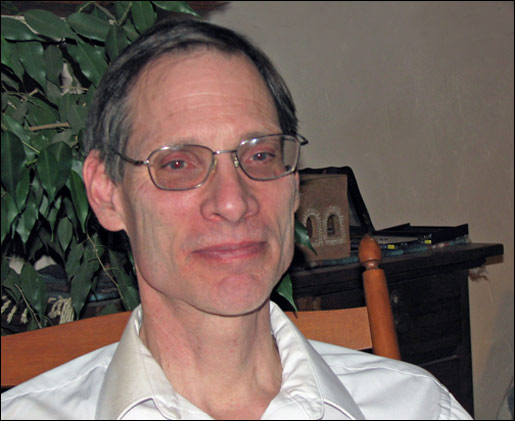Ned Spencer
10 March 2008 | By

Ned Spencer may be a key member of the ATLAS grounding and shielding team, but he came to physics at the relatively late age of 32. “All through my twenties I spent a lot of time at the San Francisco Zen Center,” he says. “Zen Buddhism is really a kind of yoga in which the main asana, or position, is sitting cross-legged.” That was something Ned had difficulties with. “I began to have trouble with the nerves in my legs so I couldn’t sit and meditate much. That limited what I felt I could do in the community.”
It was time for a change of direction, and a slight change in scenery. “I already really loved physics, so I decided to move to Santa Cruz in the early 1980s and began my studies at UCSC,” he says. After completing his bachelor’s degree, he stayed with the particle physics group and helped turn it into an electronics group. “I learned electronics engineering by doing high energy physics,” he remembers.
Learning to construct complicated electronic components through experimentation sounds a daunting prospect, but Ned was able to draw on earlier experiences. At the age of 19, he and a friend constructed a Mongolian-style yurt on the bluffs overlooking the James River in Virginia. “We used plans from the Whole Earth Catalogue,” he says. “We built it out of the silliest stuff – slabs off the sides of logs from a nearby saw mill. We got an immense amount of wood from there. The guy who owned the mill was away for the day, and we managed to get a wagonload for $20. When the owner came back, he said: “That wasn’t the right price!””
Ned and his friend lived in the yurt for a summer. “It was an experiment in how simply one could live,” he says. “Learning about constructing stuff the hard way, not the simple formulaic way. It was about doing something efficient with the material at hand.” Those principles will sound familiar to all involved in the construction work of the ATLAS detector, which Ned came to focus on in 1998.
But before ATLAS, Ned Spencer worked hard on the Superconducting Super Collider (SSC) in Texas. “It was an immense accelerator project – many times bigger than anything that came before,” he says. However, in 1993 the politics went sour in the US congress and the SSC was cancelled. “They were actually digging the tunnel at the time,” he remembers.
The SSC’s loss quickly became ATLAS’s gain, however. “We were quite far on with our development when the SSC was cancelled,” Ned says. “So we transitioned into ATLAS instead.”
Working on the grounding and shielding of the ATLAS detector has been another exciting chapter in Ned’s electrical engineering career. “It’s been a real adventure,” he says. “I travelled to the Rutherford Appleton Laboratory in England a lot, using my knowledge and working with them to adjust the mechanical and cooling designs into an instrument that could also work effectively.”



